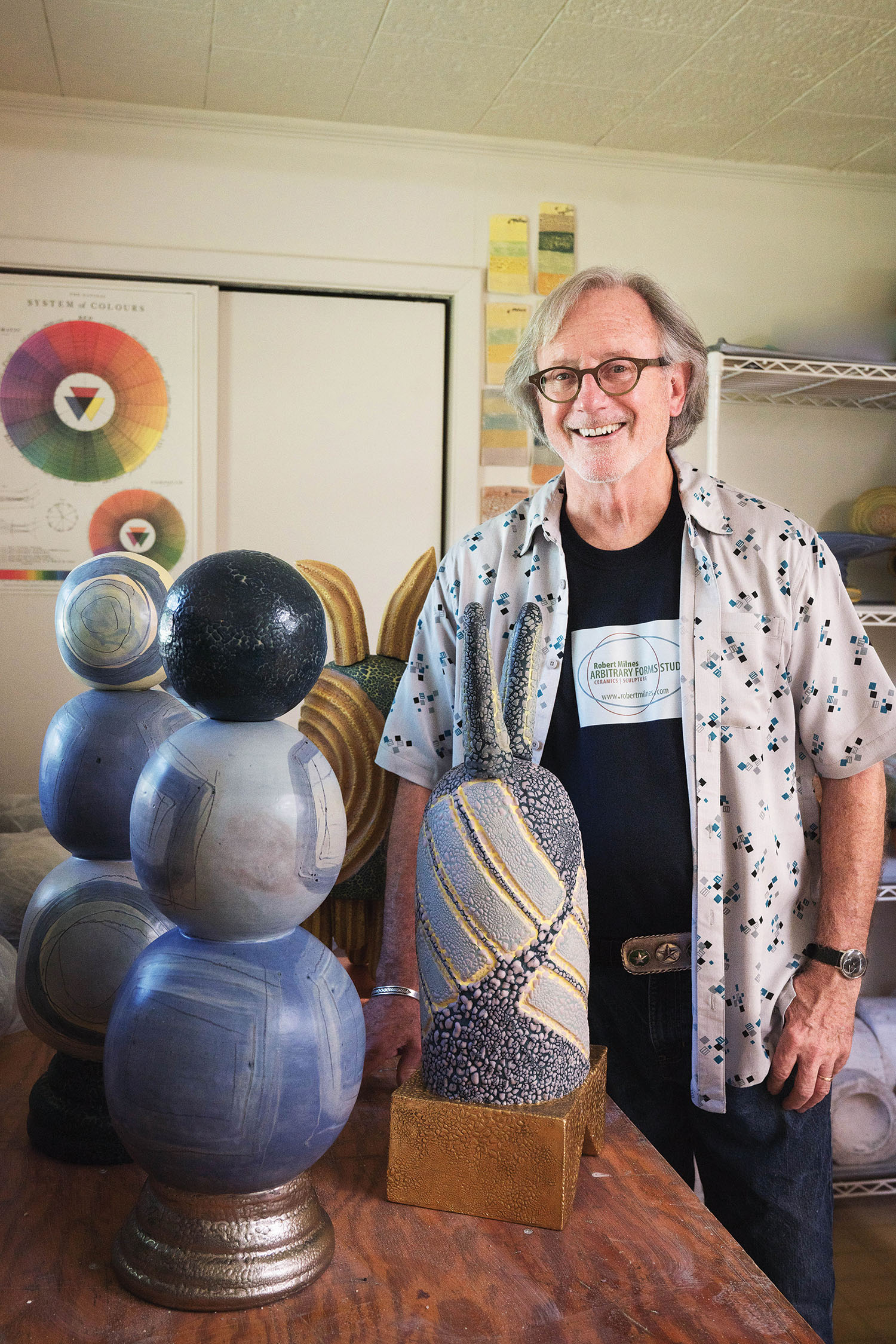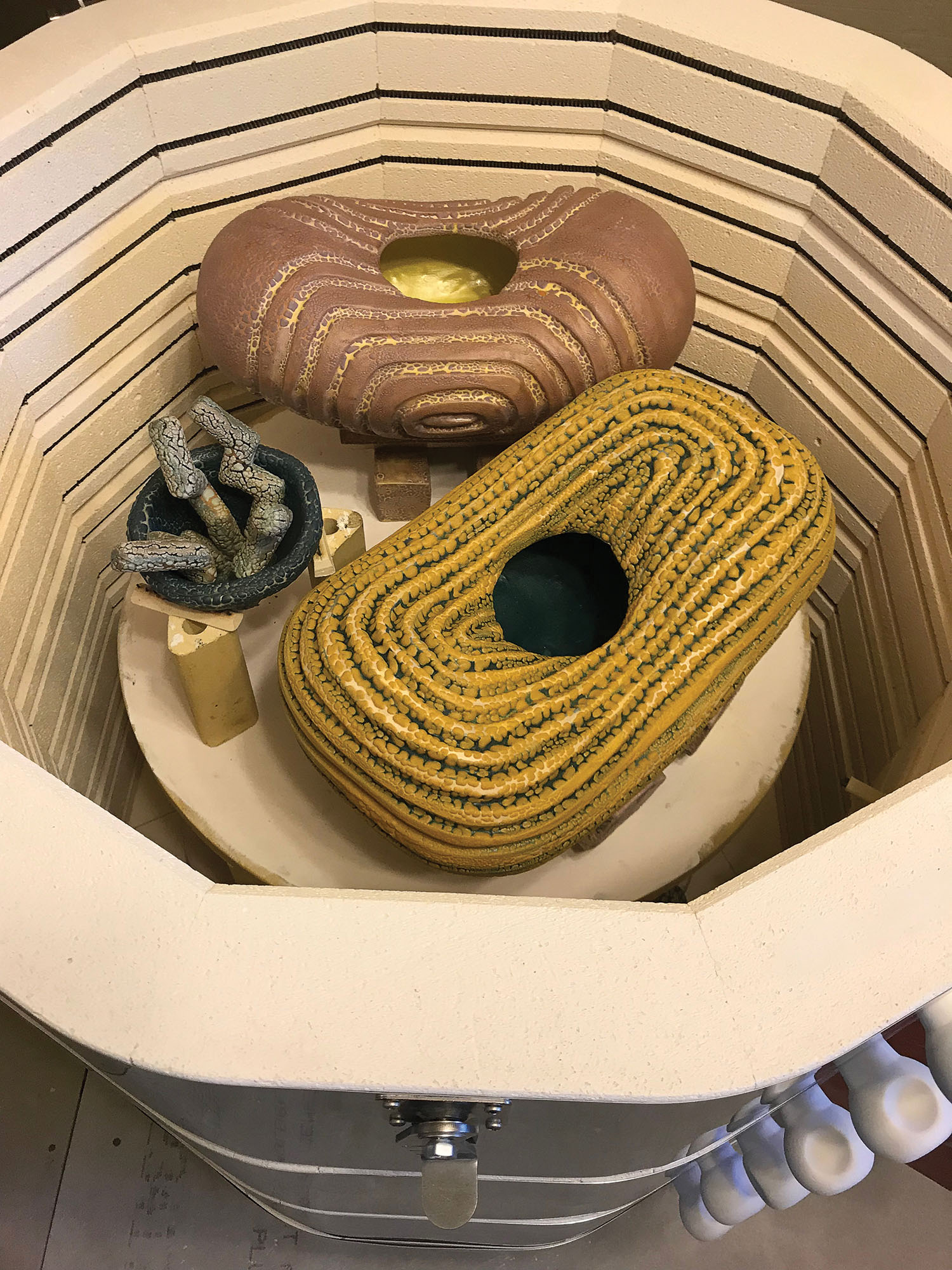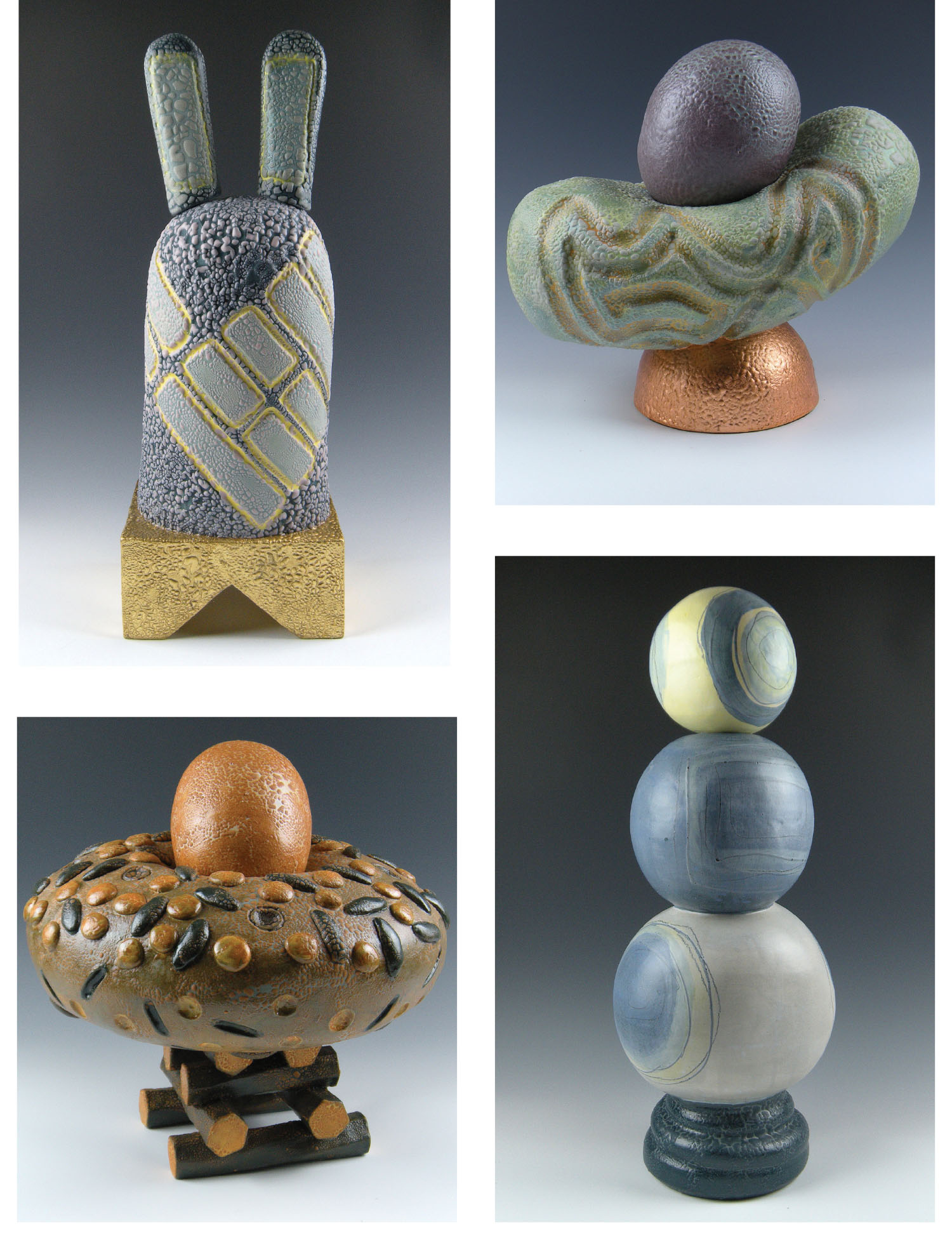
Robert Milnes’ deep-seated passion for the arts has led him to excel in distinct careers. His two paths have been intertwined, one about the other, for many years. “First,” he says, “I am an artist and craftsperson. I have to make things to be healthy.” He’s also worked as an art-and-design educator and consultant for more than 65 schools in the U.S., Mexico, and the Middle East.
Throughout nearly all of his work in academia, Milnes has maintained a personal studio, calling it Arbitrary Forms — a reference from a book about post-formalist art by Jack Burnham. Despite the studio’s name, the creative/administrative balance he seeks there is quite deliberate. “I never saw [my] two pursuits as separate, though regularly one or the other took up the majority of my time,” he says.
Early on, Milnes could never afford the things he wanted to have around him. “So the best thing to do,” he says, “was to make them. Furniture, houses, and landscaping were all things I created, along with my art. It’s been important to think about — and have some control over — my environment.”

When he started college, he planned on becoming a lawyer, but began auditing sculpture classes near the end of his freshman year. “[After] changing majors six times, by the end of my junior year, I found I was spending ten hours a day in the sculpture studio — and no one was making me.”
His first encounter with clay, in 1969, amounted to love at first sight. But hard questions soon followed the infatuation. “For me,” he says, “it’s always why, then what, and then how.”
But negative capability also has its place. “I believe most of making art is choosing what not to do, since really, one could do anything,” Milnes muses. “I generally don’t invent imagery or forms. Rather, [I’m] working with established systems used to depict the way people understand and communicate with the world.” The surfaces of his pieces might include Morse code as a binary mark-making system, brain-wave patterns, topographic and weather-mapping systems, electrical and plumbing symbols, and phrenology concepts. “The marks we make today are much like the pictographic and hieroglyphic marks people made centuries before to describe complex systems,” he notes.
Milnes and his wife Karen moved to Asheville in 2014. He says he’s partway through the process of reexamining all he’s created over the past 48 years, figuring out how he might reinterpret his body of work in light of what he’s learned in the intervening years. Which includes “working on contained spaces and linear structures that I first explored in the 1980s and 1990s, using earthenware and copper,” he says. “Fortunately, I have a long way to go.”

Robert Milnes, Arbitrary Forms Studio, 10-A Meadow Road, Asheville. For more information, call 408-772-4654, 828-505-0705, e-mail milnesstudio@gmail.com, or see robertmilnes.com. The artist is participating in American Craft Week October 5-18 (facebook.com/AmericanCraftWeekWNC) by demonstrating hand-built ceramics processes at his studio by appointment; he’s part of the 2nd Annual Beaverdam Studio Tour, happening Saturday, Oct. 27 and Sunday, Oct. 28 (beaverdamstudiotour.com). Milnes also sells his work at In Tandem Gallery in Bakersville (intandemgallery.com), and will have a show at Blue Spiral 1 in Asheville beginning January 10 (bluespiral1.com).
This is a wonderful article on an amazing ceramic artist, Robert Miles! Asheville Made is a treasure of a magazine to support our local artists!